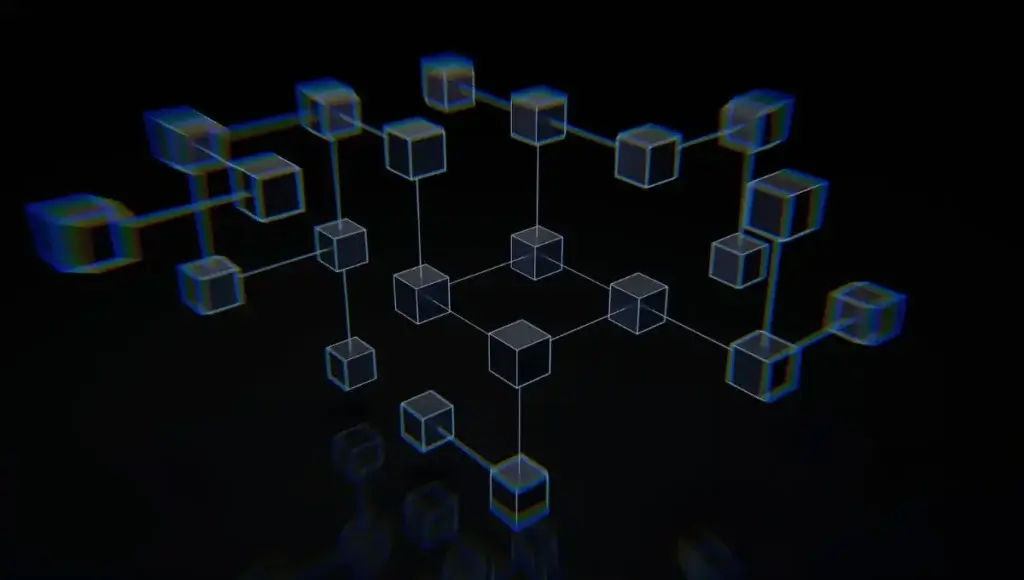We all know the importance of blockchain which works as the foundational technology for cryptocurrencies such as Bitcoin (BTC). Many different industries worldwide have recognized blockchain as a revolutionary technology and have even predicted its potential development in various sectors like supply chain tracking and healthcare. Researchers are taking great interest in developing blockchain tech in different fields.
Presently, the blockchain industry is fragmented into multiple technologies that are incompatible with each other or with other user devices. As a result, users transmit their tokens and execute smart contracts via a single blockchain. Here, blockchain interoperability between various blockchains is usually unanticipated in their protocols and usage methods.
All about Blockchain Interoperability?
Blockchain Interoperability is the blockchain’s ability to easily exchange data within various blockchains spread across various sectors. Blockchain tech documents your owned assets and their transactions and blockchain interoperability represents all the different types of transactions on another blockchain. This system allows the transfer of economic activities from a single chain to different blockchains freely and safely. So, the economic potential of one blockchain is not restricted to it but spreads within different blockchains.

The earliest form of trustless cryptocurrency exchange is the atomic cross-chain swaps. Various cryptocurrency users use atomic swaps to exchange their assets in a trustless, atomic method. However, atomic swaps disallow the transmission of tokens between different blockchains, as it destroys some amount of assets on the source blockchain and recreates the same amount on the receiving blockchain. Since atomic swaps require a destination blockchain to trade assets, online markets offer an outlet to exchange them. This outlet needs a centralized and trustful system that forms a network with different blockchains. At present, cross-chain technology is a popular method of blockchain interoperability.
Let’s dive deep into this feature and know how blockchain can affect interoperability.
Cross-chain technology
A distributed ledger technology (DLT) receives from or exchanges data with other blockchain systems. Cross-chain technology helps this data interoperability by allowing data exchange between DLT designs and external systems. This method provides security to the DLT designs, improves flexibility, and offers performance issues solutions.

In the Sharding method, the distributed ledger is fragmented into small parts to allow easy control, and parallel transactions, improving its scale and performance. During asset transfers, cross-chain tech transfers assets, and cross-chain oracles transfer data from one distributed ledger to another. So, cross-chain oracles offer confirmation that a specific transaction has occurred.
Cross-chain smart contracts execute a smart contract on a distributed ledger, to enhance the automation process. Unlike cross-chain oracles, cross-chain smart contracts execution happens when we issue transactions on the target blockchain, modifying the original distributed ledger’s state. Ripple is a blockchain method that attempts to investigate cross-chain transactions. It uses fiat currencies and cryptocurrencies to assist banks worldwide in settling various international payments.
How does blockchain interoperability work?
The cross-chain technology uses various protocols to allow data sharing, smooth transactions, and interoperability between blockchain networks. It even allows communication between users while doing safe transactions providing an easy exchange of information and value.

However, this exchange varies between different networks. Each network uses a unique blockchain interoperability method to generate safe transactions without using third-party interfaces. Therefore, all the networks cannot use a single default method of transactions between them.
Moreover, blockchain networks use relays to monitor the activities happening on other chains. Their interconnected operating system allows a single cross-chain contract to function as the primary client. This principal client connects with other nodes easily across different chains without using distributed nodes. Eventually, this helps the contract validate particular central clients and their transaction histories. However, the use of relays is costly as they demand constant maintenance and security operations.
Advantages of blockchain interoperability
Bitcoin users simply utilize the same blockchain to exchange their data and value. However, asset users with different blockchain platforms, find data transferring unsafe in those chains. Blockchain Interoperability solves asset and data interaction issues prevailing across various chains
Moreover, companies using blockchain technology work in a wide range of blockchain networks, that are active globally. Interoperability attempts to make easier transactions between different chains, reducing transfer and value issues.
Furthermore, financial ecosystems function on different blockchains. Therefore, client engagement, transactions, and communications with financial firms in the financial services industry are nearly impossible for financial companies. Interoperability helps transfer data and funds safely and on time between these financial ecosystems and helps company executives stay connected with their clients.
Methods of blockchain interoperability

Blockchain interoperability uses several techniques to improve cross-chain interoperability between blockchain networks. Some important ones are mentioned below.
Notary schemes
A third-party notary scheme includes a trusted exchange called a notary. It manages the trust issues between two blockchain parties involved in a transaction. The notary can be a controlled exchange or a network of different exchanges. Notary schemes depend on the notary’s integrity to work efficiently.
Even though a group of notaries decentralizes the scheme, it involves a centralized component. Examples of notary schemes are centralized cryptocurrency exchanges like Binance and Coinbase.
Sidechains
A sidechain involves two blockchains, a mainchain, and a sidechain helping two active blockchains to communicate with each other. A cross-chain communication protocol connects the two chains, while each chain maintains an asset inventory. Some examples of blockchain interoperability projects are BTC Relay, RSK, Mimblewimble, and Poa network.
Oracles
Oracles facilitate the easy flow of information among on-chain and off-chain blockchain settings. Decentralized oracle services such as Chainlink provide blockchain-enabled smart contracts with secure off-chain data. They track multiple blockchain ecosystems ensuring that they are referring to a single source of truth about various data information.
Blockchain routers
Blockchain routers help numerous blockchain networks like Bitcoin, Ethereum, etc. to communicate with each other. These networks called sub-chains are terminal components in the blockchain routing network. Sub-chains connect only with blockchain routers and do not connect with each other.

A cross-chain communication protocol enables communication between sub-chains and the blockchain keeps all data registered on the sub-chains. The router develops a trust connection between chains and allows communication between sub chains.
Industrial solutions
Polkadot is a heterogeneous multichain translation system that allows communication between specific sidechains and open blockchains. However, Cosmos can create blockchains even without permission. Cosmos includes zones and hubs that communicate with each other using the inter-blockchain protocol. Both Polkadot and Cosmos are cross-chain interoperability protocols.
Hashed TimeLocks
Hashed TimeLock Contract (HTLC) is used to create smart contracts that can alter payment channels. It makes time-bound transactions in the crypto space. If they couldn’t produce cryptographic proof of the payment receipt, the transaction is canceled and the recipient will not receive any money. Timelock blocks the usage of a specific amount of cryptocurrencies for a given time period.
The Bitcoin Lightning Network uses the hashed timelock to execute off-chain transactions through interconnected payment channels. Thus, users that are not directly connected to the chain can send money via network routing through the payment channels.
Where is blockchain interoperability used?
Industries like law and healthcare use cross-chain interoperable smart contracts to create Web3 platforms, which were impossible before, and exchange data between public and private blockchains. Moreover, blockchain interoperability can use the wallet and multi-token transaction systems offering a streamlined user experience for crypto users.
Furthermore, application-specific blockchains can use the decentralized hub to exchange data with each other safely. Various independent businesses can also connect with other industries and communicate using blockchain interoperability.
Blockchain interoperability challenges
A blockchain once registered on a network cannot be muted and is strictly monitored for security reasons. So, it is highly inevitable that users check their data before sending it to an initial node.
In addition, no blockchain ledger model is the same. Some of them have lesser mining support while others have many. Therefore blockchains that are strong and reliable are subjected to data manipulations by other inconsistent parties. They need higher security to avoid data issues while transferring information from a less reliable ledger.
To Conclude
Blockchain interoperability connects different blockchain networks set up by various industries to facilitate safe and easy transactions and data transfers. Many researchers and developers are working to improve its connectivity among various sectors, providing higher security levels and smooth money transactions. As new methods emerge, it is estimated that interoperability would offer higher levels of security and seamless user experiences to blockchain users at various levels.




